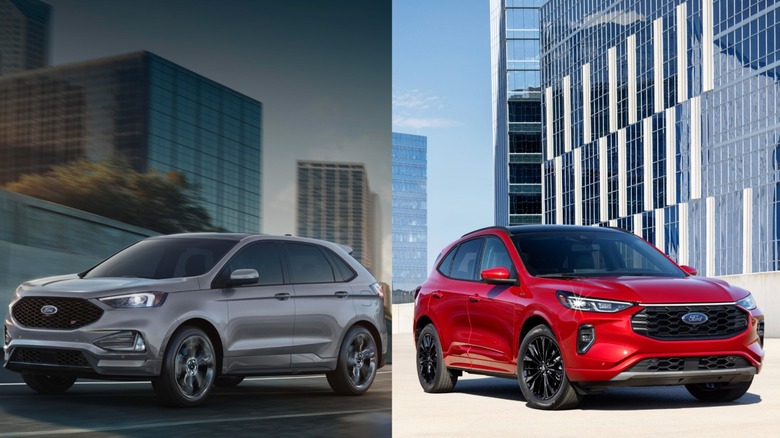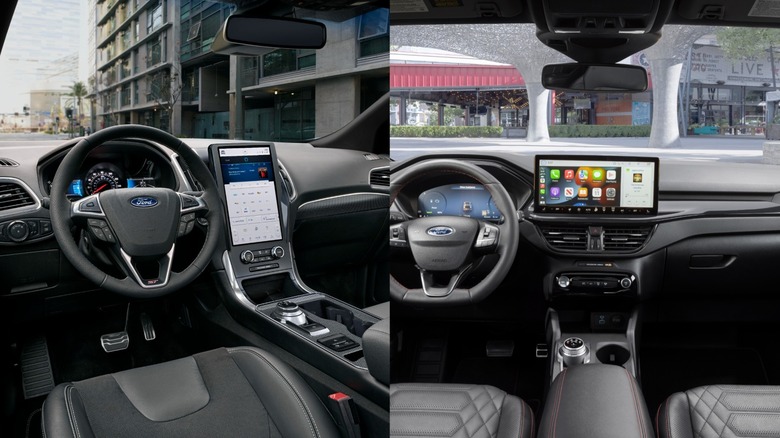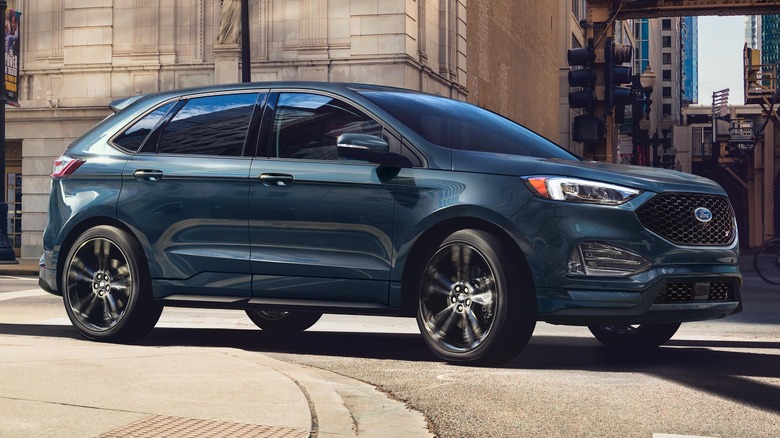Is The Ford Edge Bigger Than The Escape? Cabin Size And Cargo Space, Compared
The SUV segment of the automotive industry is both popular and competitive. Automaker Ford offers several models within the genre, including the Edge and Escape, though Ford discontinued the Edge recently — perhaps due to sagging sales. The Escape sold 141,883 units in 2023, per Goodcarbadcar.net. In contrast, the Edge sold 106,098 units during the same time period, according to FordAuthority.com. But despite superior sales, the Escape also made our list of compact SUVs to avoid when looking for a used car in 2024. With the Escape seemingly capturing more attention from drivers, is there a dramatic difference between the two Ford SUVs in terms of size and stowing capability?
Regarding exterior dimensions, the Edge is longer, taller, and wider than the Ford Escape. This added size benefits the Ford Edge with superior cargo capacity when compared to the EcoBoost Escape and even more space when side-by-side with the hybrid variant. Often, manufacturers will need to borrow space from the cargo areas of hybrid SUVs in order to house the batteries powering the electric motor.
Edge vs. Escape: cargo space and interior passenger room
Once you step inside these similar SUVs, the contrasts between the two begin to show. A review on Car and Driver stated, "The Ford Edge has excellent storage capacity, while the Ford Escape doesn't compete as well with others in its class." When measuring the interior space of an SUV, there are two critical figures: Storage with the seats folded down and storage with the rear seats in use.
The Edge provides a total of 73.4 cubic feet of space if the rows are folded down beyond the front driver and passenger seats. The Escape offers 8 cubic feet less at 65.4 cubic feet behind the first row. When the second row of seats is in use, the space behind them is also roomier in the Edge, with 39.2 cubic feet against the Escape, which offers 37.5 cubic feet in the gasoline model, and 34.4 cubic feet in the hybrid. The Edge offers a slight advantage in terms of front headroom with an extra 0.2 inches and provides an extra inch of headroom in the rear seat area.
Edge vs. Escape: outside dimensions
Neither the Ford Edge nor Escape is a full-size SUV. In fact, these models are referred to as mid-size crossovers, helping to bridge the gap between the agile performance of a sedan with the cargo space of an SUV. Typically, in the SUV industry, smaller dimensions equal greater maneuverability. After all, one of the most significant downsides to large vehicles is that they can be cumbersome to navigate and park, especially in packed downtown metropolitan areas.
When compared side-by-side, the Edge is 8.7 inches longer than the front-wheel drive Escape and 7.6 inches longer than the all-wheel-drive configuration of Escape. The Edge also sits just over 2 inches higher and 0.2 inches wider than the other Ford mid-size crossover. While a bit larger than the Escape, the performance-oriented Edge ST is still quick and sits at a surprising spot among the American Ford ST models ranked from slowest to fastest.


